Tomeco, a partnership of Belgian tomato growers, is taking a new step in the transition from plastic to cardboard packaging. With the purchase of a new machine, the group is able to pack products in cardboard on a large scale. "The possibilities with this new machine are endless, and it also fits in seamlessly with the character of our group," says Tom Verdonck, brand manager at Tomeco. "The machine scores high on both ecological and economical aspects, it is easy to operate, has a high production speed, is economical and also packs with a minimum of material."
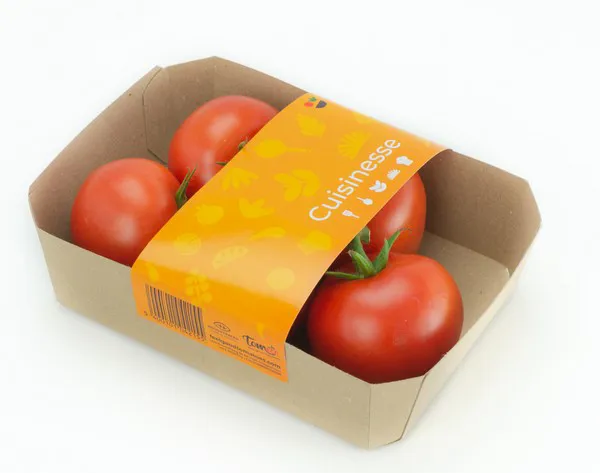
TomECO
The share of cardboard packaging has been growing for years. Plastic punnets, topseals, and flowpacks are being replaced by cardboard sleeves, trays, and other variations. In France, from next year onwards, it will no longer be permitted to pack fresh fruit and vegetables in plastic.
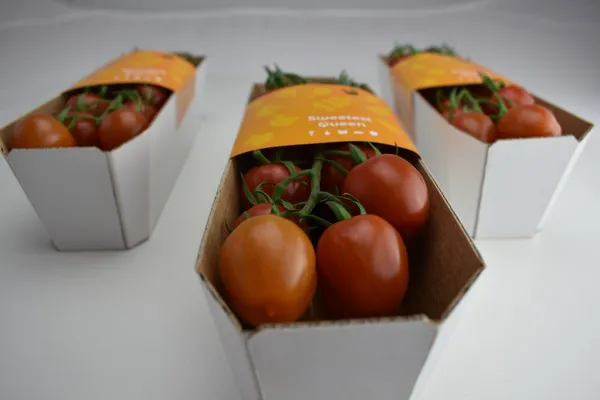
Tomeco opts for cultivars that are firmly attached to the truss so that the tomatoes stay fresh and in the tray longer.
"With this investment, cardboard becomes an attractive alternative, and we hope to be able to inspire customers to actually make that transition to 100% cardboard packaging now," says Tom. "The 'eco' in Tomeco is there for a reason, it's a determining factor in our business," says Tom. This machine and the associated packaging method, therefore, fit in well with the group's ecological ambitions.
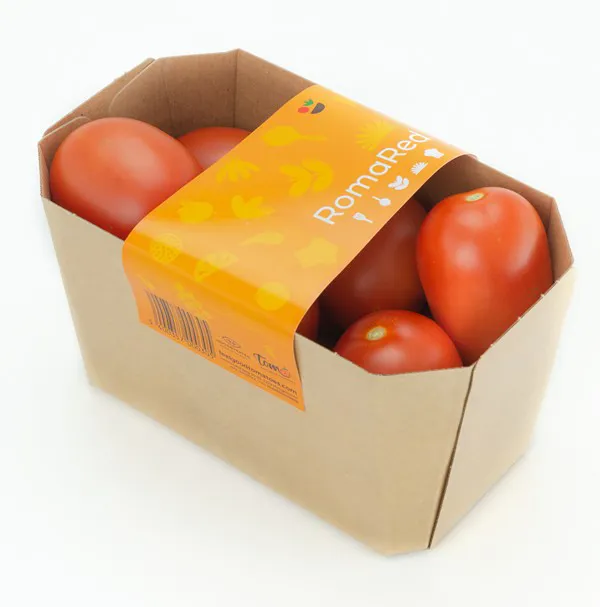
Mono material
In addition, it is easier for consumers to separate waste if packaging consists of one type of material, so the use of mono-material in packaging has a positive effect on the recycling process. The very possibility of recycling makes cardboard an ecologically interesting material. In Belgium, for example, flow packs are not allowed in the plastic waste stream and are not recycled, but instead end up in the residual waste stream and are eventually incinerated.
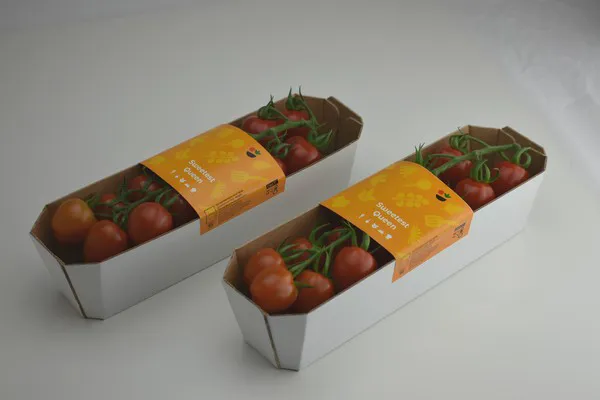
Liner-free
Another additional advantage is the absence of a carrier such as stickers and labels have. The label is liner-free, which means that no waste is produced during the packaging process. The labels are custom-made and supplied by the company Belona, which works together with the supplier of the machine in order to achieve the most ideal combination of material and adhesive. The labels are self-adhesive and feature an anti-adhesive strip so that no residue is released during the production process. There is space on the label for variable text.
How it works
The principle of the machine is actually quite simple. In the settings, the dimensions of the tray and the label are determined, after which the machine is ready for use. A tray filled with product enters the machine, after which the machine cuts a label from the roll and sticks it over the box. The ends of the label have an adhesive edge so that it sticks to the box by itself. In this way, the machine can process up to 50 tubs per minute. "The possibilities with this machine are endless", says Tom. "Both the format and the printing can be changed quickly and easily. A production change takes little time and can even be done within minutes., and the production speed of about 50 units per minute is even comparable to a flowpacker. Banding would take much longer for us."
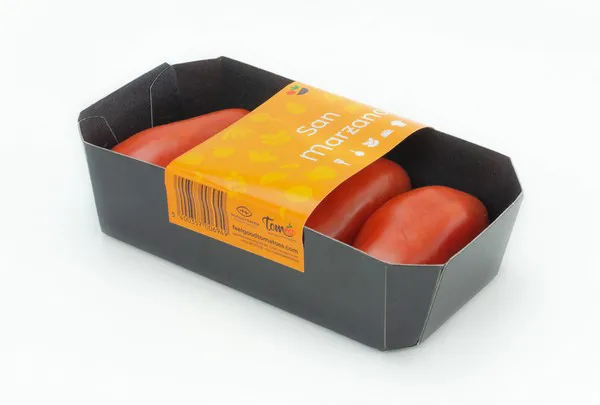
Open
As a result of the pandemic, there is a trend towards more and better packaging. However, the label in this packaging method only partly covers the product. The advantage of this is visibility, but it also makes the product more vulnerable. "This machine offers a solution for that too," says Tom. "It is possible to adjust the label size so that the whole product is covered. For the visibility of the tomatoes, holes can then also be punched in the label that allow you to see into the container."
For more information: 
Tom Verdonck
Tomeco
+32 488 156 416
[email protected]
www.tomeco.be
